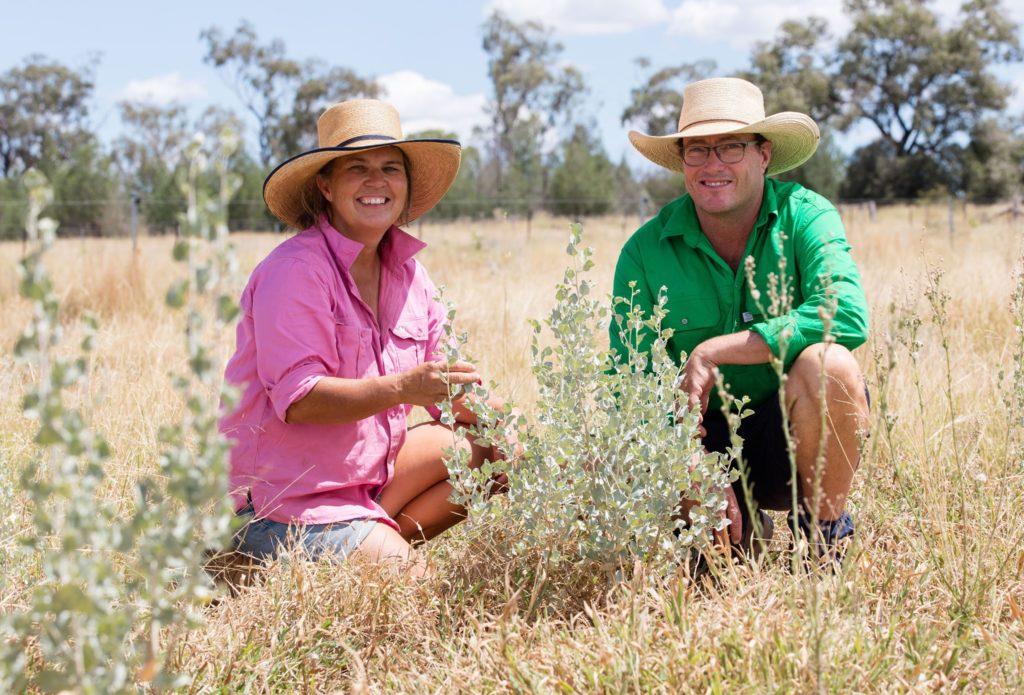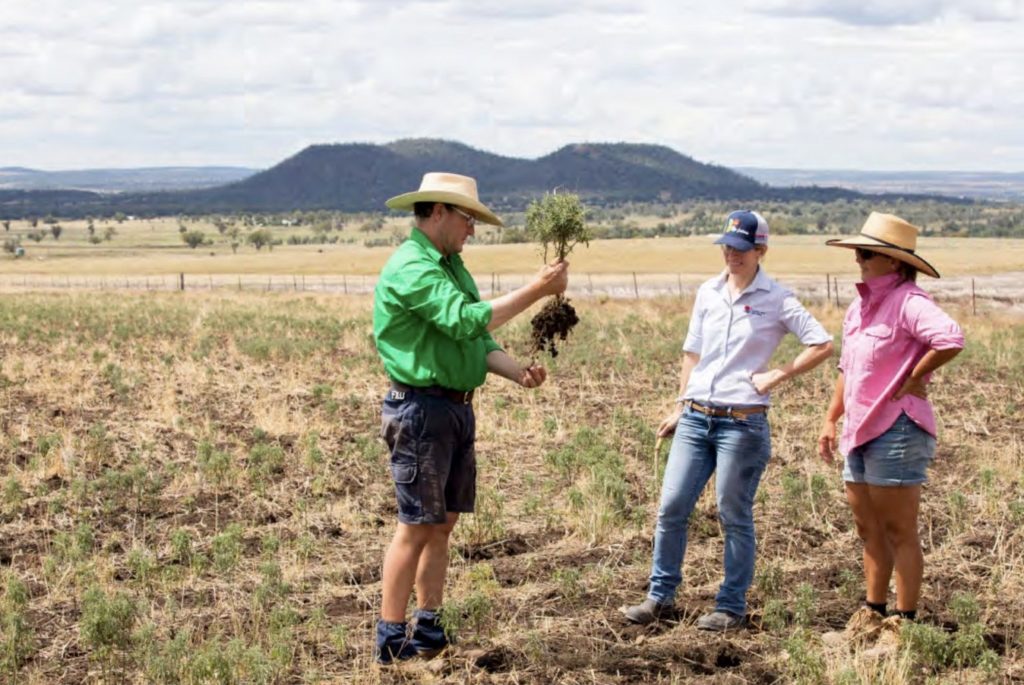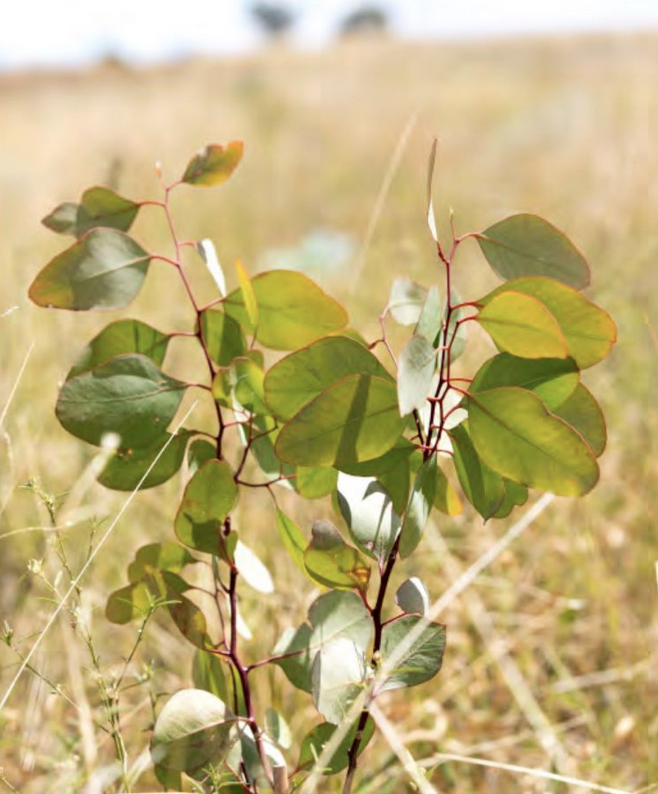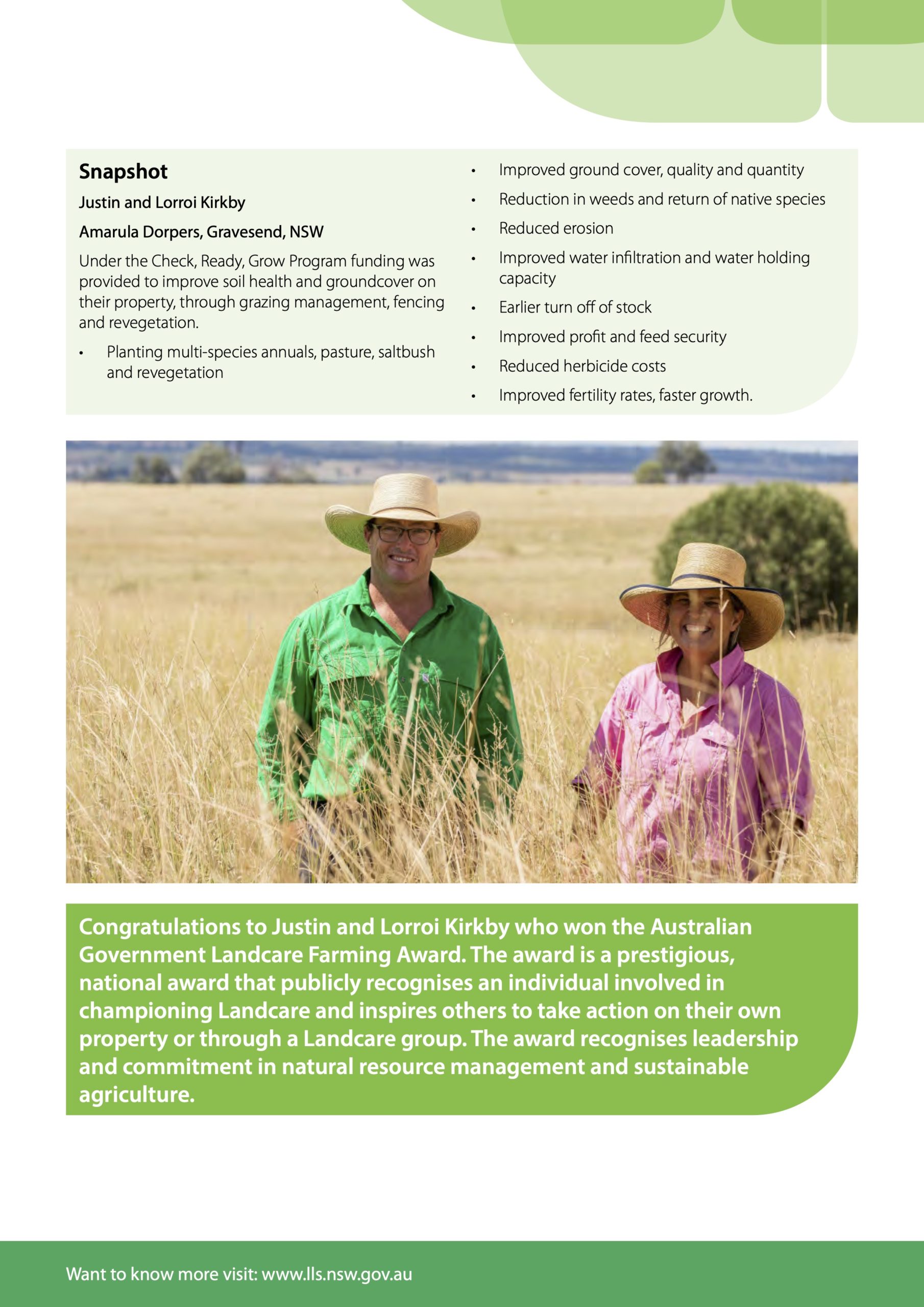The Kirkbys property in North West NSW has been transformed into a highly productive showpiece for regenerative agriculture – all through a lot of hard work and some assistance from Local Land Services.
Under the watchful stewardship of commercial and stud dorper sheep breeders Lorroi and Justin Kirkby, the bare or burr infested hills are now teeming with biodiversity, in soils, plants and animals. This biodiversity has led to the Kirkbys running less stock for more profit, and conception rates are up. A further major economic positive has been significant reduction in weed (undesirable plant species) control costs and drought proofing.
Their motto is “‘we don’t have to do this: we get to do this’ – and it’s hugely satisfying.”

Working with locals
While Justin and Lorroi have proactively sought knowledge and the experience of other regen farmers to build their own system, they credit the assistance of the Local Land Services team with helping them set goals with more clarity and achieve them more quickly.
This was facilitated through the ‘Check, Ready, Grow’ program, which focuses on the individual landholder’s business, where it is heading and what opportunities exist to help improve natural assets. The program assists landholders to complete self-assessment benchmarks for their natural assets and business competencies and to also guide project proposals for Local Land Services funding.
Under the program, funding was made available to support Lorroi and Justin to further improve their soil health, groundcover and biodiversity.
“This has allowed us over the past two years, to undertake fencing, increase plantings of multi species annuals, pasture, saltbush, trees and shrubs,” Lorroi said.
“This financial and professional support allows us to get essential infrastructure in sooner: without this, the projects we’ve undertaken would have been smaller and taken longer.”
Lorroi and Justin describe what they do, in the most basic terms, as ‘building soil’. It’s the initial and key priority on which their regen ag system is built.
In their sloping, light, red country, there is an immediately visible difference in the amount and quality of topsoil in regenerated versus areas they’re just starting on.
With a healthy layer of humus, the new soil they’re building is more friable and teeming with life in the form of microbes which includes bacteria, rhizomes, fungi and nematodes.
These microbes are the building blocks of good pasture and healthy soils.

Justin and Lorroi with Pippa Jones, Senior Land Services Officer with North West Local Land Services.
Planting multi-species annuals and a move away from herbicides has been a major contributor to success, which has seen a reduction in undesirable plant species and the return of native legumes and grasses such as emu bush, curly windmill grass and more.
Multi-species plantings outcompete weeds with incredible results. Weeds in former farming paddocks like galvanised burr, mintweed, and castor oil were once thick, yet now more isolated, less robust plants exist. Not spraying weeds also allows the Kirkbys to take up the benefits the weeds can offer, such as opening up the soil for better infiltration, providing carbon and supporting soil biology, that will be there when the native grasses return.
“Going away from herbicides to kill weeds, we are seeing the return of native species, and improved soil biology,” Justin said.
“We view weeds now as useful, by leaving the weeds we get the use of their root systems to build soil health and biology, aid water infiltration and provide humus later on, which is a part of the soil-building process.
“Of course, the other major benefit has been the saving on chemical.”
Proof in the planting
The quality of the pasture is being reflected in their dorpers, as conception rates are up, quality has improved and stud stock can be turned off earlier due to increased growth rates.
Erosion control has been mitigated due to improved groundcover and better infiltration characteristics of the soil.
“Now that we have rebuilt quality soil here, it has supported healthy groundcover and the rainfall stays in the paddock, where we need it,” Justin says.
“This is a part of our drought mitigation strategy, to improve our soil water holding capacity, along with our saltbush plantings, which have drought tolerance and high protein levels, perfect for our dorper flock.”
Under the latest project with Local Land Services, saltbush has been planted over 300 hectares. This will add to the older stands the Kirkbys already planted in previous years.
The inevitability of drought
“Essentially, in marginal rainfall areas, producers are either going into drought, in drought or coming out of drought,” Justin says.
“Due to help with several projects with Local Land Services we now have three times our previous carrying capacity, but that doesn’t mean we will increase our herd: we look at it as being three times more resilient.”
Trees add life to landscape
Lorroi says the tree plantings are creating new ecosystems on the farm, which had been lost over the years as it was developed.
Pippa Jones, Senior Land Services Officer with Local Land Services, said the plantings will aid in improving the connectivity of vegetation across the property. This connectivity allows birds and animals to move through the landscape and provides habitat for them to thrive.
“The trees are improving biodiversity and attracting all sorts of animals that wouldn’t be there if there was no shade,” Lorroi said.
“I went up to the trees recently and I really noticed the sound of the activity, birds, insects and bees were everywhere, where before it was silent.
“They’re also providing shelter for our stock and help us move to the smaller paddock format we’ve adopted.”

Trees have been planted to improve connectivity and encourage biodiversity across the landscape.
Focus on the business
“While we were already on our regen journey, the seminars in Check, Ready, Grow were extremely helpful,” Lorroi says, “the business planning was great and reminded us that we need a goal, a ‘vision with an end point’.
“If you have a plan and it works, you have a method.
“Local Land Services has been fantastic to work with. Pippa’s genuine interest and local knowledge is so valuable and she has been with us every step of the way through our project.”
This project is supported by North West Local Land Services through funding from the Australian Government’s National Landcare Program and Catchment Action NSW.
Download the case study:
Download PDF here
View PDF flip book below:

